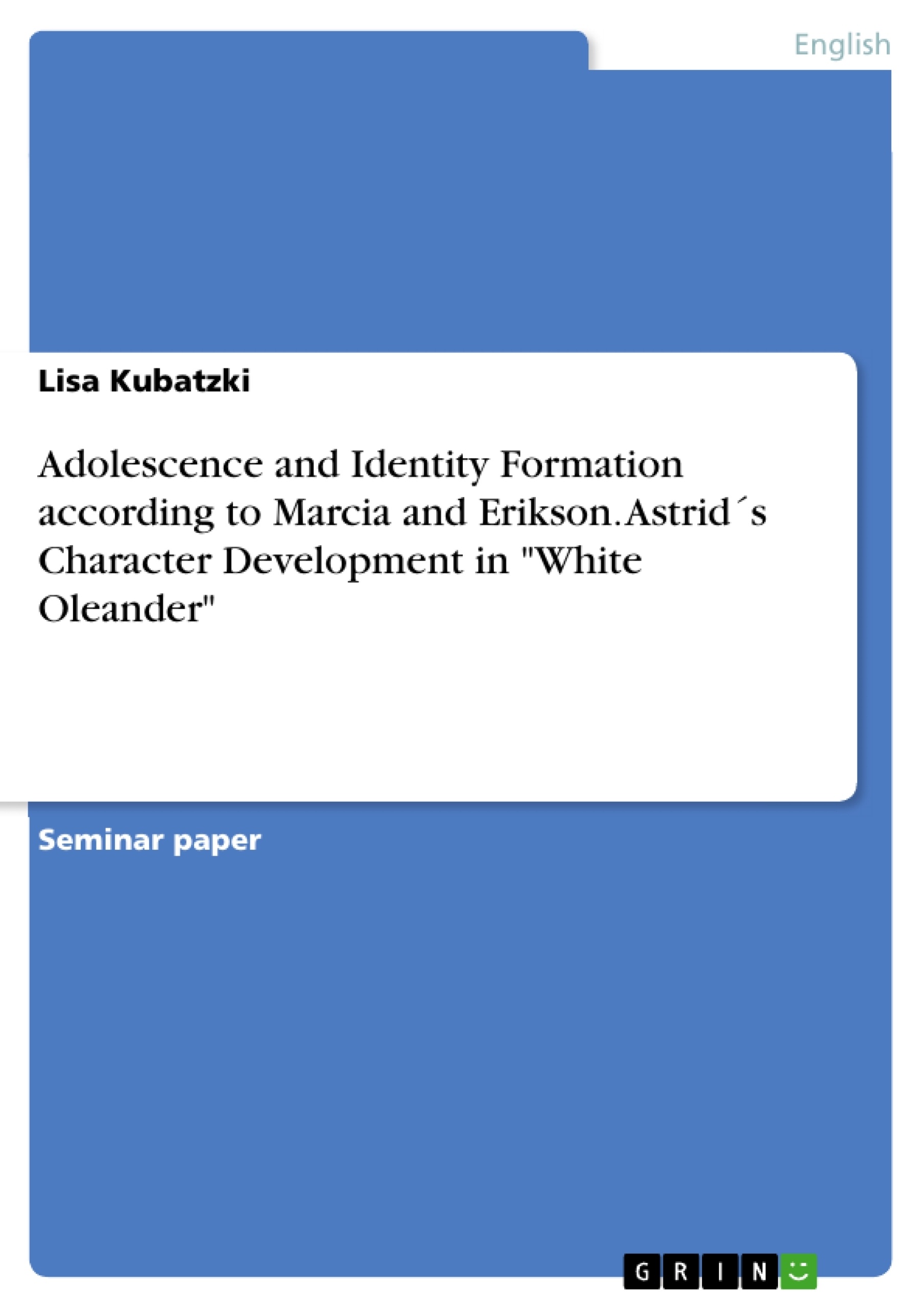In this paper, I aim to reflect on psychosocial theorists Marcia and Erikson's ideas about identity formation in adolescence and prove the validity of their theories with help of the movie. I will point out that individuals can go through all of the statuses Marcia proposes in his theory, namely foreclosure, moratorium, and identity diffusion, in order to reach an identity achieved.
The character of teenage daughter Astrid in the movie White Oleander is a perfect example of how an individual's identity is con- and reconstructed throughout the age of adolescence. James Marcia's model of the four identity formation statuses, as well as Erik Erikson's theory on identity formation during adolescence, is evident throughout different stages of her story. As a child of a manipulative mother, Astrid develops from a mirrored copy of her mother to a self-determined, independent adult, despite being confronted with different obstacles and troubles along her way.
I will show that, apart from adolescence being a time of extreme change and conflicts by itself, being confronted with different lifestyles in Astrid's case of different foster families, and the ultimate abandonment of parental ideologies and values will lead to an independent identity.
As it would go beyond the scope of this paper, I will not go into further detail about critical views on Marcia and Erikson's concepts. Especially Erikson who has published his theory of the different stages of the life cycle during the 1950s to the 1980s, was critically reviewed by feminist theorists, object relations theorists and orthodox psychoanalytic theorists. Generally, his theory was criticized for being “too Freudian” as the basis for his concept is Sigmund Freud's concept of ego, superego, and Id and excludes non-male perspectives.
A much more strong emphasis in order to analyze White Oleander though, will be drawn upon James Marcia's identity formation statuses, a theory developed in the 60s which is build up on the foundation of Erikson's theory. After introducing both of the theories, I will apply them to Astrid's character development.
Table of Contents
- Introduction
- Erik Erikson and James Marcia's Theories on Adolescent Identity Formation
- Adolescence in Erik Erikson's Eight Stages of Psychosocial Development
- James Marcia's Four Identity Formation Statuses
- Identity Achievement
- Moratorium
- Foreclosure
- Identity Diffusion
- Astrid's States of Identity Formation in White Oleander
- Conclusion
Objectives and Key Themes
This paper examines the concept of identity formation during adolescence through the lens of Erik Erikson's theory of psychosocial development and James Marcia's four identity formation statuses. The paper analyzes the character of Astrid in the movie White Oleander, highlighting how her identity is shaped by various influences and challenges. The paper aims to demonstrate the validity of these theories by showing how Astrid navigates through different identity statuses on her path to self-discovery and independence.
- Adolescent Identity Formation
- Erikson's Theory of Psychosocial Development
- Marcia's Four Identity Formation Statuses
- Astrid's Character Development in White Oleander
- The Impact of Family Dynamics and Environmental Influences on Identity
Chapter Summaries
The paper begins by introducing Erik Erikson's theory of psychosocial development, focusing specifically on the fifth stage of adolescence. This stage is characterized by the conflict between identity and role confusion, where adolescents grapple with questions of self-identity and their place in society. The paper then delves into James Marcia's model of four identity formation statuses: Identity Achievement, Moratorium, Foreclosure, and Identity Diffusion. These statuses are described in detail, outlining their key features and potential implications for adolescent development.
The main focus then shifts to the movie White Oleander, analyzing the character of Astrid. The paper explores how Astrid's journey through adolescence exemplifies the concepts introduced in Erikson's and Marcia's theories. It examines Astrid's experience of different identity statuses, influenced by her upbringing, family dynamics, and encounters with various foster families. Through a close analysis of her character development, the paper demonstrates how Astrid ultimately navigates through these statuses to achieve a sense of self-identity.
Keywords
This paper explores key concepts within the field of adolescent identity formation, including Erik Erikson's psychosocial development theory, James Marcia's four identity formation statuses, and the role of family dynamics and environmental influences on identity development. The analysis of Astrid's character development in White Oleander serves as a case study to illustrate the application of these theories in understanding adolescent identity formation.
- Quote paper
- Lisa Kubatzki (Author), 2018, Adolescence and Identity Formation according to Marcia and Erikson. Astrid´s Character Development in "White Oleander", Munich, GRIN Verlag, https://www.grin.com/document/903513




